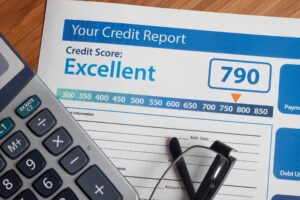Home equity loans and home equity lines of credit (HELOCs) are two popular ways homeowners can leverage the equity in their homes to access funds. Whether you’re looking to finance a major home renovation, pay off high-interest debt, or cover unexpected expenses, understanding the differences between these financial products is crucial. This blog delves into the intricacies of home equity loans and HELOCs, examines current trends in the mortgage market, and explores how these trends impact consumer decision-making.
Understanding Home Equity Loans
What is a Home Equity Loan? A home equity loan, often referred to as a second mortgage, allows homeowners to borrow against the equity they’ve built up in their property. Equity is the difference between the home’s current market value and the outstanding balance of the mortgage. With a home equity loan, you receive a lump sum of money upfront and repay it over a fixed term with fixed monthly payments.
Key Features of Home Equity Loans
Fixed Interest Rate: One of the main attractions of home equity loans is the fixed interest rate. This means your monthly payments remain constant throughout the life of the loan, providing predictability and stability.
Lump Sum Payment: The entire loan amount is disbursed at once, making it ideal for large, one-time expenses such as home improvements, debt consolidation, or major purchases.
Repayment Term: Home equity loans typically have repayment terms ranging from 5 to 30 years. The longer the term, the lower your monthly payments, but you’ll pay more in interest over the life of the loan.
Collateral: Your home serves as collateral for the loan, meaning that if you default, the lender can foreclose on your property.
Pros and Cons of Home Equity Loans
Pros:
- Fixed interest rates provide predictable monthly payments.
- Lump sum payment is suitable for large expenses.
- Interest may be tax-deductible if used for home improvements.
Cons:
- Your home is at risk if you default.
- Limited flexibility compared to a HELOC.
- Upfront costs and fees can be substantial.
Understanding Home Equity Lines of Credit (HELOC)
What is a HELOC? A HELOC functions more like a credit card than a traditional loan. It provides a revolving line of credit that you can draw from as needed, up to a predetermined limit. You can borrow, repay, and borrow again, making it a flexible financial tool for ongoing expenses.
Key Features of HELOCs
Variable Interest Rate: HELOCs typically come with variable interest rates, which means your monthly payments can fluctuate based on changes in the prime rate or other benchmarks.
Draw Period and Repayment Period: HELOCs have two phases: the draw period and the repayment period. During the draw period (usually 5 to 10 years), you can borrow funds as needed. Once the draw period ends, the repayment period begins (typically 10 to 20 years), during which you can no longer borrow and must repay the outstanding balance.
Revolving Credit: Like a credit card, you have the flexibility to borrow, repay, and borrow again within the draw period. This makes HELOCs suitable for expenses that occur over time, such as ongoing home improvements or educational costs.
Collateral: Similar to home equity loans, your home serves as collateral.
Pros and Cons of HELOCs
Pros:
- Flexibility to borrow as needed.
- Interest is charged only on the amount borrowed.
- Potentially lower initial interest rates compared to home equity loans.
- Interest may be tax-deductible if used for home improvements.
Cons:
- Variable interest rates can lead to fluctuating monthly payments.
- Your home is at risk if you default.
- After the draw period ends, you must repay the outstanding balance, which can lead to higher payments.
Current Mortgage Market Trends
The mortgage market has seen a shift towards rising interest rates, influenced by various economic factors including inflation and monetary policy changes by the Federal Reserve. As of mid-2024, the Federal Reserve has implemented several rate hikes to combat inflation, leading to higher borrowing costs across the board.
For homeowners, this means higher interest rates on new home equity loans and HELOCs. While home equity loans offer fixed rates, securing a favorable rate becomes more challenging as rates climb. For HELOCs, the impact is more immediate and pronounced due to their variable rate structure.
Impact on Consumer Decision-Making
The trend of rising interest rates significantly impacts how consumers choose between home equity loans and HELOCs. Here are a few considerations:
Cost of Borrowing: As interest rates rise, the cost of borrowing increases. Consumers may lean towards home equity loans to lock in fixed rates, providing protection against further rate hikes. On the other hand, the initial lower rates of HELOCs may still attract those who need short-term flexibility.
Market Uncertainty: Economic uncertainty often makes fixed-rate products more appealing. Homeowners may prefer the predictability of fixed payments over the potential volatility of variable rates associated with HELOCs.
Financial Goals: The choice between a home equity loan and a HELOC can also depend on the homeowner’s financial goals and needs. Those with a specific, large expense may favor the lump sum provided by a home equity loan, while those anticipating ongoing expenses might benefit from the flexibility of a HELOC.
Home Price Trends
Home prices have been on a steady upward trajectory in many regions, increasing the available equity for homeowners. This rise in home values presents an opportunity for homeowners to tap into more significant amounts of equity. However, it also necessitates careful consideration of market conditions and future home value trends when deciding to borrow against home equity.
Lender Practices and Products
Lenders continuously adapt their offerings to align with market conditions. Some trends include:
Hybrid HELOCs: Some lenders offer hybrid HELOCs that combine features of both home equity loans and HELOCs. These products may start with a fixed-rate term before converting to a variable-rate line of credit, providing a balance of predictability and flexibility.
Promotional Rates: To attract borrowers, lenders may offer promotional rates on HELOCs, such as low introductory rates for a specified period. Consumers need to be aware of these terms and the potential rate increases once the promotional period ends.
Enhanced Online Tools: The mortgage industry has seen a surge in digital tools and platforms that allow homeowners to easily apply for and manage their home equity loans or HELOCs. These tools enhance transparency and streamline the borrowing process, making it easier for consumers to compare options and make informed decisions.
Making the Right Choice
Assess your financial situation before deciding between a home equity loan and a HELOC. Consider factors such as:
Purpose of the Loan: Are you funding a one-time expense or ongoing costs? This can guide you towards a lump sum (home equity loan) or flexible borrowing (HELOC).
Interest Rate Environment: In a rising rate environment, locking in a fixed rate may be advantageous. Conversely, if rates are stable or expected to decrease, a HELOC might offer cost savings.
Repayment Capacity: Ensure you have a clear understanding of your repayment capacity and how variable rates could impact your finances if choosing a HELOC.
Home Value Trends: Consider current and projected home value trends in your area to ensure you are not over-leveraging your property.
Consulting with Financial Advisors
Given the complexities of these financial products and the dynamic nature of the mortgage market, consulting with financial advisors can provide valuable insights tailored to your specific situation. Advisors can help you evaluate the pros and cons, consider tax implications, and navigate the borrowing process.
Shopping Around for the Best Terms
Different lenders offer varying terms, rates, and fees for home equity loans and HELOCs. Shopping around and comparing offers from multiple lenders can help you secure the best deal. Pay attention to the Annual Percentage Rate (APR), which includes both the interest rate and any fees, to get a true sense of the borrowing cost.
Evaluating Lender Reputation
Finally, consider the reputation and customer service of the lender. A lender with a strong track record and positive customer reviews can provide peace of mind and support throughout the life of your loan or line of credit.
Conclusion
Home equity loans and HELOCs are powerful financial tools that allow homeowners to tap into the value of their property. Each option has its advantages and potential drawbacks, influenced by factors such as interest rates, market conditions, and individual financial goals. Understanding these nuances and staying informed about mortgage market trends can help you make the best decision for your financial future.
As interest rates continue to fluctuate and home values evolve, making an informed choice between a home equity loan and a HELOC requires careful consideration and potentially the guidance of financial experts. By doing so, you can leverage your home equity to achieve your financial goals while managing risks effectively.
If you’re considering a home equity loan or HELOC, O1NE MORTGAGE is here to help. Our experienced team can provide personalized guidance and competitive rates to meet your needs. Call us today at (866) 688-9020 to explore your options and start the process.







